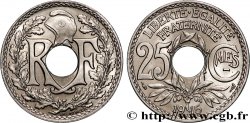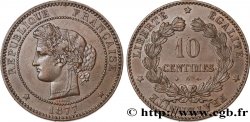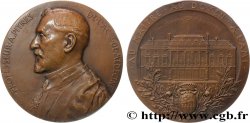fme_911529 - III REPUBLIC Médaille, Société de Saint-Vincent-de-Paul, Conférence de Notre-Dame de Saint-Mandé
55.00 €(Approx. 57.20$ | 45.65£)
Quantity
Add to your cart

Type : Médaille, Société de Saint-Vincent-de-Paul, Conférence de Notre-Dame de Saint-Mandé
Date: 1919
Metal : bronze
Diameter : 50,5 mm
Orientation dies : 12 h.
Engraver TROTIN Charles (1833-?)
Weight : 69,01 g.
Edge : lisse + corne BRONZE
Puncheon : corne BRONZE
Coments on the condition:
Patine hétérogène, des marques d’usure sur les reliefs et des taches d’oxydation visibles
Obverse
Obverse legend : ST VINCENT DE PAUL.
Obverse description : Buste à gauche de Saint-Vincent de Paul. Signé : C. TROTIN.
Reverse
Reverse legend : SOCIÉTÉ DE SAINT VINCENT DE PAUL // CONFERENCE NOTRE-DAME / DE / SAINT MANDE / - / M.ME / P. BAUDET / -/ 21 X.BRE 1919.
Reverse description : Légende circulaire autour d’une couronne faite d’une palme et une branche de chêne, légende gravée en 6 lignes à l’intérieur.
Commentary
Médaille gravée au nom de Madame P. Baudet.
Charles Trotin, est un graveur sur métaux et de timbres et médailleur français né le 23 septembre 1833 à Paris, mort à une date et un lieu inconnus. Fils de Jean Aimé Trotin, attaché au service de la maison de l'empereur en 1864, et de Joséphine Demarcy. En 1864, il était domicilié chez ses parents 63 rue du Bac et s'est marié, âgé de 30 ans, le mardi 31 mai 1864 dans le 7e arrondissement de Paris avec Céline Claire Sauton, âgée de 17 ans. Il a exposé au Salon des artistes français de 1875 à 1883.
La Confédération internationale de la Société de Saint-Vincent-de-Paul (SSVP) est une organisation de bienfaisance, catholique, laïque, dirigée par des bénévoles, et créée à Paris en 1833 par un groupe de laïcs catholiques parmi lesquels se trouvait celui qui sera plus tard béatifié par le pape Jean-Paul II, Frédéric Ozanam..
Charles Trotin, est un graveur sur métaux et de timbres et médailleur français né le 23 septembre 1833 à Paris, mort à une date et un lieu inconnus. Fils de Jean Aimé Trotin, attaché au service de la maison de l'empereur en 1864, et de Joséphine Demarcy. En 1864, il était domicilié chez ses parents 63 rue du Bac et s'est marié, âgé de 30 ans, le mardi 31 mai 1864 dans le 7e arrondissement de Paris avec Céline Claire Sauton, âgée de 17 ans. Il a exposé au Salon des artistes français de 1875 à 1883.
La Confédération internationale de la Société de Saint-Vincent-de-Paul (SSVP) est une organisation de bienfaisance, catholique, laïque, dirigée par des bénévoles, et créée à Paris en 1833 par un groupe de laïcs catholiques parmi lesquels se trouvait celui qui sera plus tard béatifié par le pape Jean-Paul II, Frédéric Ozanam..








 Report a mistake
Report a mistake Print the page
Print the page Share my selection
Share my selection Ask a question
Ask a question Consign / sell
Consign / sell
 Full data
Full data









